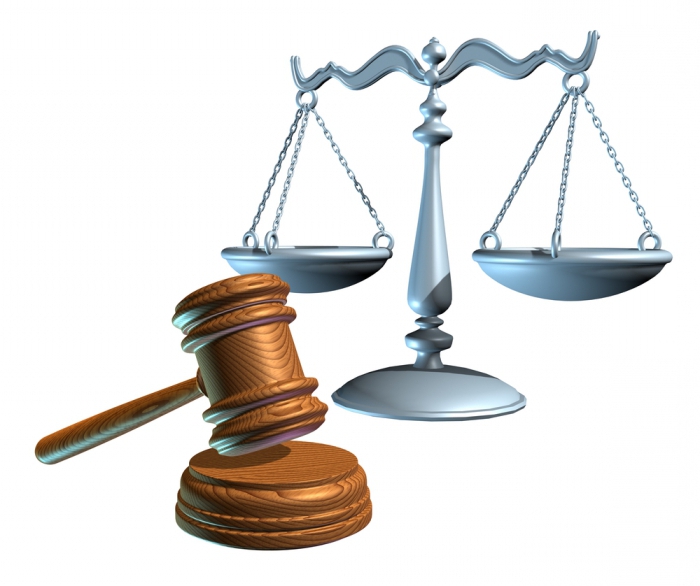A formed and structured system of law is the most important condition for the functioning of the state. The relevant legal sphere can be characterized by the presence of remarkable properties, due to national specifics. What features of the Russian system of law can be called? What are the common concepts in law schools in the Russian Federation that reflect the nature of the term in question?
Definition of the legal system
What is a legal system? According to the common version, this is a combination of legal sectors, institutions and legal norms, reflecting the simultaneous unity and specialization of each of its constituent elements. The concept of a legal system should not be equated with a combination of different types of legislation, which is only one of its possible aspects.

The main feature of the phenomenon we are considering is systematicity. That is, the logical relationship of its elements. Another important feature of the legal system is relevance. That is, it is assumed that it will reflect the real needs of the state and society. The next key feature of the legal system is legitimacy. That is, the mechanism of its reproduction is accepted by the state and society as legal, universally binding for all citizens.
Principles of the legal system
Consider the key principles that underlie any legal system. Modern researchers have compiled the following list of them: the supremacy of human rights and personal freedoms, legality, competence, formalization, general accessibility, as well as the promising effect of legal norms. The listed principles are observed in all branches of the legal system, the essence of which we will study today. First of all, they should be adhered to by the legislator, which issues normative acts aimed at regulating certain spheres of public relations.
The role of subject and method
The concept and structure of the legal system are closely related to such components as the subject and method of regulation. These elements are the key criteria for dividing the legal sphere under consideration into various structural components — industries and institutions (the essence of which we will discuss a bit later).

The subject of regulation is a separate area of public legal relations, which, on the one hand, has a number of features that distinguish it from other areas, and on the other hand, properties that allow combining certain elements of legal relations on similar grounds. So, for example, family law has an object formed on the basis of a variety of legal relations with the participation of spouses, relatives, and children.
The method of regulation is no less significant, from the point of view of classification of branches of law, criterion. It is a set of ways in which the legislator regulates certain types of legal relations. There are methods of an administrative nature that involve direct state intervention in the communication of various entities, and there is a method of authorization within which participants in legal relations can make decisions themselves.
Having examined the concept and features of the legal system, we study the specifics of its structure. The study of this aspect is important for understanding the goals and objectives that the relevant legal field performs.
The system of law and its structure
What is the structure of the legal system? It is customary to distinguish three main elements that make up the subject we are studying.These are norms, institutions and branches of law. Consider each of the elements by which the structure of the system of law is built, in more detail.
Norms
Let's start with the rules. This element is a set of rules of conduct that are binding on society as a whole or its specific actors, which are established by the state and are protected by it. Legal norms are a key element of the corresponding system. They can be classified according to different criteria. For example, one of the most common is the assignment of norms to dispositive or imperative.
Institutes
The institute is an element representing a set of norms that govern a certain group of public communications, united by one or another characteristic. This may be, for example, commercial law governing the legal relations of businesses and entrepreneurs, protection of the rights of minors, and the provision of social guarantees for workers. Each of the mentioned institutes accumulates the norms of the corresponding orientation presented in the Civil, Family or Labor Codes (if we talk about the Russian model). Institutions can also be classified on a variety of grounds. So, a model is widespread, within the framework of which the criterion for classifying institutions as regulatory or protective is used.
Industries
The concept and structure of the legal system includes such a concept as an industry, which is a set of rules governing a particular area of social relations through various methods.

Legal branches are usually divided into general and special parts. The first component contains provisions that fix the legal basis for regulating relations in the industry, the second - specifies certain legal institutions related to the relevant field.
Sub-sectors of law are also distinguished — spheres that accumulate the characteristics of several institutions, but, at the same time, can be combined with other related legal categories, as a result of which an industry is formed. For example, tax law and budget, combining the properties of various institutions, can be attributed to the general financial industry. That is, the marked areas will be considered in this case sub-sectors.
There are related branches of law that are difficult to attribute to one or another independent category. For example, the concept of a land law system is fairly correlated with a term such as a sub-industry. But this area, in many ways, corresponds to the broader concept of administrative law, and also largely correlates with tax institutions.
What industries is the modern Russian legal system formed from? The following list can be distinguished:
- constitutional
- administrative
- civil
- financial
- environmental
- family
- criminal
- labor
- procedural
- executive law.

Sub-sectors and related categories of law can be represented in the widest range of varieties. There are areas that have been formed relatively recently, and among lawyers there is no consensus on their classification. For example, it is not clear to which sector corporate law should be assigned - to civil or labor law. Also, the specifics of the Russian legal system suggests that the national legal system may correlate with international legal norms.
Classification of branches of law
The classification of branches of law can be carried out according to different criteria. So, one of those may be the belonging of a sphere to the category of public or private, material, procedural spheres. Consider the features of the classification of the relevant industries, based on such criteria as the assignment of law to a public or private category.
Public Law Branches
The public branches include: constitutional, criminal, administrative, as well as financial law.Consider the specifics of each in more detail.

Constitutional law is fundamental from the point of view of the national legal model. The concept and structure of the legal system in the Russian Federation in key aspects are enshrined in the basic law of the state. The Constitution of Russia enshrines the principles of the political structure of the country, the way government bodies should be formed at the federal, regional and municipal levels.
Criminal law is a system of norms that allow attributing certain actions of citizens to crimes, as well as determining the legal grounds for liability and its limits.
Administrative law is designed to regulate legal relations that arise as a result of the activities of political management bodies operating in the Russian Federation at one or another level.
Financial law regulates the legal relations that arise due to the implementation of certain government agencies activities related to money circulation, distribution of financial resources, budget policy, and the development of the banking system.
Private law
Such a phenomenon as a system of law (the concept, its structural elements were considered above), involves the formation of private sectors as well. What is their nature? It is customary to attribute to private sectors: civil, family, and also commercial law. What is the specificity of each of them?

Civil law is designed to regulate legal relations of both property and personal nature, within the framework of which legal equality of the parties is assumed. A large number of sub-sectors of this legal sphere can be distinguished. So, family law is designed to regulate the relations that arise due to communications at the level of spouses, relatives, and children. Commercial law operates due to the need for legislative regulation of business entities. There is also a version that this industry can be considered part of civil law.
We examined what a system of law is and what are the criteria for its classification. Now let's discuss how international norms can influence the national legal system. The Russian model is characterized by certain specifics, reflecting this aspect.
The specifics of international law
There is an opinion that the concept of a legal system in the national aspect does not imply the inclusion of international norms in the structure of certain legal branches. But there is also a version that in the practice of legislative regulation of legal relations prevailing in the Russian Federation, a significant role of acts of exactly the same international nature is provided.

The fact is that even at the level of the Constitution of Russia the priority of the obligations of the Russian Federation, which are established as a result of the signing of agreements with other states, over national legal acts is spelled out. In this sense, the concept of a system of constitutional law in the Russian Federation implies the importance of international norms, as well as the fact that they can be considered part of the national legal system. But on this score there is no single point of view.
Specificity of approaches to structuring law
Having figured out what the legal system is, what is the specificity of its Russian model, we will try to summarize the key points of our small study. So, based on the foregoing, we make such a conclusion.
The legal system consists of three main elements:
- norms;
- institutes;
- industries.
In addition, some lawyers identify categories such as sub-sectors of law. They may also include spheres that are related to those that correlate with the characteristics of several industries.
Norms can be divided into two main types:
- dispositive;
- imperative.
Legal institutions can be (according to one of the classifications):
- regulatory;
- protective.
Branches of law are:
- public;
- private;
- material;
- procedural.
An important nuance should be noted.The concept and structure of the legal system are phenomena whose essence is often reviewed at the level of various law schools. Hence a wide range of approaches to the classification of the above elements that form the sphere under consideration. The concept and structure of the legal system are categories, the study of which can be carried out using a wide range of methods and theoretical concepts.
It can be noted that in a number of scientific works the concepts of “institution” and “branch” of law are identified in a number of contexts. That is, sometimes the term "civil law institution" is acceptable to use as a synonym for the phrase "civil law", denoting the relevant legal industry. This is the specificity that characterizes the structure of the legal system. The scheme that we have examined can be interpreted in other ways, depending on the methodological priorities of a particular research school.
